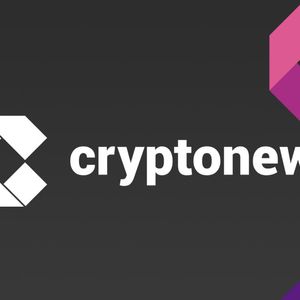Summary Semler Scientific's pivot to a Bitcoin treasury strategy has been successful. However, competition in the Bitcoin Treasury company space is heating up, including many well funded competitors. Declining revenues and free cash flow in its healthcare business are concerning, and Bitcoin is materially outperforming the Company year to date. Introduction Per its website , Semler Scientific, Inc. ( SMLR ) (the " Company ") "develops, manufactures and markets innovative products and services that support the early detection and treatment of chronic diseases." QuantaFlo® is its patented product; namely, an "FDA-cleared point-of-care product that measures arterial blood flow in the extremities and provides results in a matter of minutes." A mediocre health care company, in May 2024 , the Company shifted its strategy and focus to Bitcoin ( BTC-USD ) (" Bitcoin "), becoming a so called Bitcoin treasury company (a " BTC Treasury Co. "). And with its healthcare business seemingly riddled with regulatory issues , recent guidance from management suggests that the Company will focus even more on Bitcoin going forward, including raising lots of capital to aggressively accumulate more Bitcoin. This article will focus upon the Company's fitness as a BTC Treasury Co. While the Company's stock price should do well if Bitcoin keeps rising, I currently consider the Company a HOLD. The reasons for the HOLD rating include 1) increased competition in the BTC Treasury Co. space, including MicroStrategy ( MSTR ), Metaplanet Inc. , privately held Twenty One Capital, several crypto miners and Asset Entities Ltd. ( ASST ), among others, and 2) the simplicity of owning Bitcoin outright compared to owning the Company's stock, particularly when the Company's healthcare operations are not currently generating positive free cash flow. Financial Strength and Related Matters The ideal BTC Treasury Co. would have an easy to understand underlying business that generates lots of free cash flow. Said BTC Treasury Co. could then plough that excess cash flow back into the acquisition of more Bitcoin, without diluting shareholders . In the case of the Company, however, its underlying business operations are not currently throwing off free cash flow. Excluding the "Change in fair value of digital assets" line item on the Company's consolidated statement of cash flows, net cash provided by operations for the periods ended March 31, 2025 , March 31, 2024 and March 31, 2023 were as follows: (In Thousands of $) March 31, 2025 March 31, 2024 March 31, 2023 Net Cash Provided by Operations (1,906) 5,624 861 Minus the Increase in Change in fair value of digital assets 41,829 -- -- Total Cash from Operations (43,435) 5,624 861 Source: 10Qs for the quarters ended March 31, 2025 and March 31, 2023 (links in the above paragraph); table created by Author. The above table shows that the Company's underlying healthcare business is currently burning through cash. Unsurprisingly, at only $8.8 million, revenue for the first quarter ended March 31, 2025 experienced a 44% year over year decline. On top declining operating revenues, the Company's regulatory controls relating to its underlying healthcare business are questionable in light of a recent settlement with the Department of Justice . The settlement requires the Company to pay a nearly $30 million fine. The Company will finance the settlement payment with a loan from Coinbase Global Inc. ( COIN ). The Company's Bitcoin will secure the loan. Basic metrics of the Company's financial strength, such as the current ratio are also declining. (In Thousands of $) March 31, 2025 March 31, 2024 March 31, 2023 Total Current Assets $18,452 $71,905 $55,592 Total Current Liabilities 35,667 5,903 8,918 Current Ratio 0.52 12.18 6.23 Source: 10Qs for the quarters ended March 31, 2025 (linked above), March 31, 2024 and March 31, 2023 (linked above); table created by Author. Of course, the Company has been leveraging its balance sheet to buy more Bitcoin , in addition to funding the healthcare business. As such, the current ratio may not be the most helpful way to assess the financial strength of the Company. Nonetheless, the low current ratio, coupled with the negative cash flow, signal that the Company is risky relative to owning Bitcoin outright. In a large Bitcoin drawdown, the Company may have to sell Bitcoin at a low price (i.e., at the wrong time) in order to fund operations, service its debt and pay trade creditors. In light of the above described backdrop, it comes as no surprise to me that Bitcoin is outperforming the Company year-to-date (through May 23rd) by a wide margin, as shown in the chart below. Seeking Alpha Notably, the Company's stock is trading around $44 as of the time of writing, well below its 52-week high of $81.56, while Bitcoin is trading near all-time highs ($110,211 at the time of writing). Investors should also be aware that during the December 31, 2023 to March 31, 2025 period, outstanding common shares have increased from roughly 7.1 million to 9.8 million, a nearly 40% gain in shares outstanding. In isolation, the dilution is problem for shareholders; however, the Company does seem to be adding value here as the Bitcoin Yield has increased by 22.2% year to date. Risks In addition to the risks embedded in the discussion above, other risks of the Company are included or referenced below. As a constituent of the Russell 2000 Index, the Company is not the beneficiary of the same level of passive capital inflows that accrue to constituents of larger and more popular equity indexes such as the S&P 500 or the Nasdaq 100. When everything is about flows, this could prove a competitive disadvantage for the Company, particularly if other BTC Treasury Co.'s are the beneficiaries of inclusion in larger indexes. More automatic capital inflows will generally mean a lower cost of capital. Increased competition (discussed below) for such passive flows could have an adverse effect on the Company. Competition in the BTC Treasury Co. space is growing. New entrants to the space may be better funded and have better business models than the Company. For example, the recently formed Twenty One Capital aims to compete with MicroStrategy and recently acquired more than $450 million of Bitcoin. Japanese company, Metaplanet , is growing rapidly. Several bitcoin miners have issued debt and/or equity to acquire more Bitcoin. Moreover, Asset Entities, Inc. ( ASST ) is converting to a BTC Treasury Co. with its reverse merger with Strive Asset Management, and the newly combined company has novel ideas on how to accumulate more Bitcoin. The Company's healthcare business is highly regulated and failure to comply with applicable regulations can result in material fines and penalties, an example of which was referenced earlier in the article. Other risks of owning share in the Company are outlined in the Company's most recent 10K (starting on page 2 thereof). Conclusion In the fast moving BTC Treasury Co. space, I do not think the Company currently stands out among the field. If it can turn its healthcare business into a cash flow generating asset, however, I would be interested in giving it another look. For now, I reiterate that the Company is a HOLD.



















